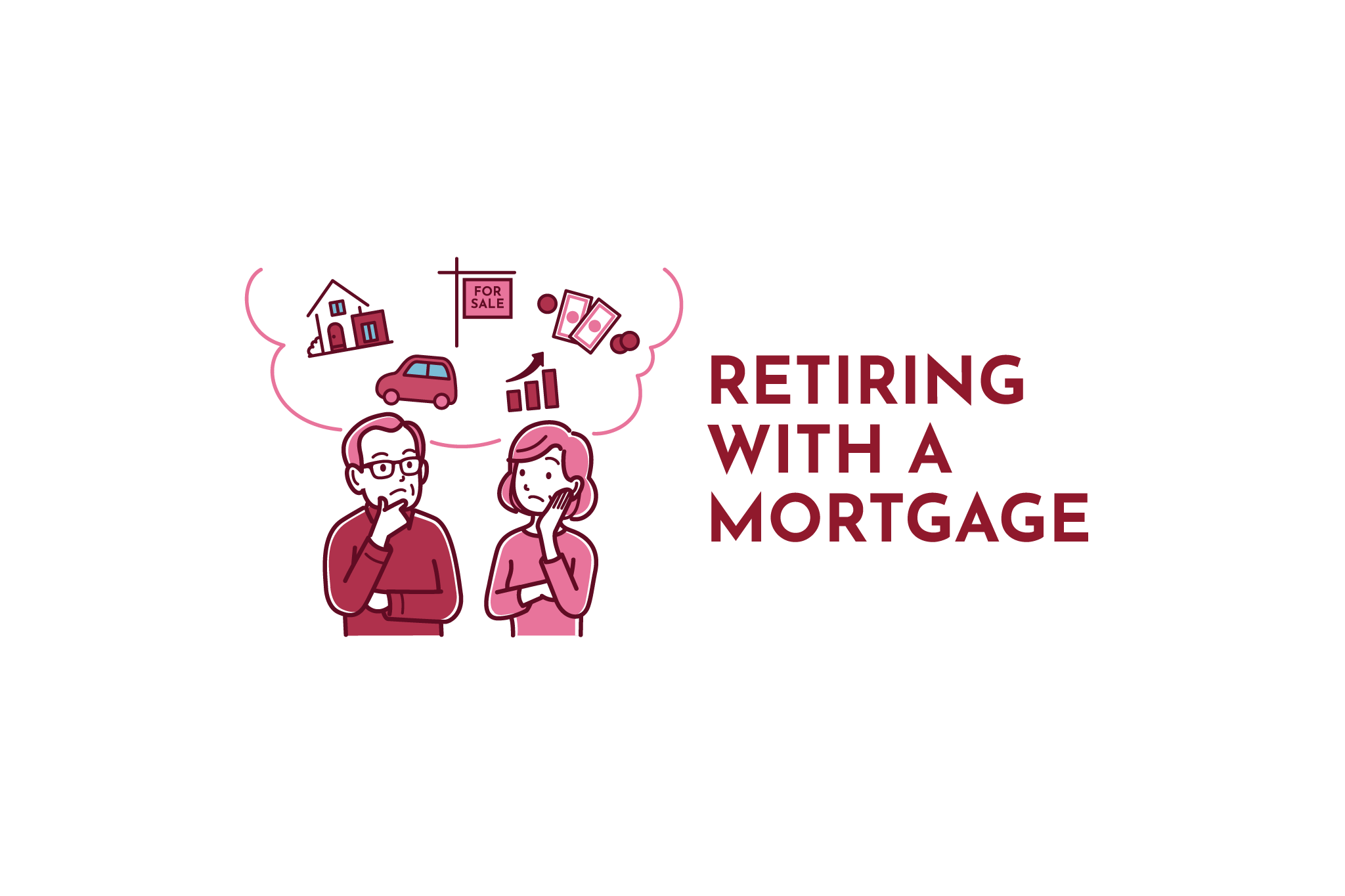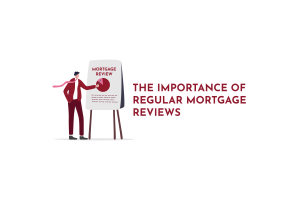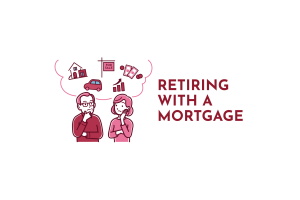If you look back at the past, you’ll see a working life landscape that is very different from the one we live in today. Gone are the days when someone stayed in a single job for decades, retired at 65, had a farewell party at work, received a gold watch, and shared a slice of cake before riding off into retirement.
The disappearance of long-term careers isn’t the only thing that has changed in Canada. Another major shift is what people expect to have in retirement. One of the most significant changes in recent years is that many Canadians are now facing the reality of retiring while still making monthly mortgage payments.
While retiring mortgage-free has long been a common goal, the truth is that more and more people today are unable to achieve it.
Let’s take a moment to explore why people are retiring with mortgages and what options they have moving forward.
In this article:
- Why is Retiring Mortgage-free Less Common?
- What Type of Options are Available for Retirees with a Mortgage?
- What about Downsizing?
- Accessing Equity Without Selling
- Talk to the Experts!
Why is Retiring Mortgage-free Less Common?
There are many reasons why people are entering retirement without having fully paid off their mortgages. If we look at some of the more common causes, we see:
- Homes simply cost more: Higher home values have led to larger mortgages, and the ability to pay them down over time has diminished.
- Refinancing during working years: Many people have needed to refinance their homes to manage cash flow or consolidate debt. This often extended the length of their mortgage or increased the balance, making it difficult to pay off before retirement.
- No strong incentive to pay off the debt: We’ve just come through a long period where mortgage interest rates were at historically low levels. During that time, many people chose to use extra cash flow to pay off higher-interest debts, allowing their mortgage to carry on into retirement.
- People want to retire earlier: Remember the idea of “Freedom 55”? With more people aiming to retire earlier, the number of working years available to pay off a mortgage has decreased.
Another recent trend is also contributing to retirees making mortgage payments. In some cases, retirees aren’t entering retirement with an existing mortgage, but instead choose to take on one to help their adult children buy homes. They tap into the equity built up in their own homes, sometimes taking out a new mortgage during retirement.
In short, life happens—and you need to adapt. If you’ve reached retirement and still have a mortgage, remember this: having a plan in place makes managing mortgage payments in retirement far more manageable.

What Type of Options are Available for Retirees with a Mortgage?
I want to start by emphasizing once again the importance of having a financial plan. It’s essential to work with an advisor who has a complete understanding of your financial situation.
In some cases, carrying a mortgage into retirement is unavoidable. Your financial plan should account for this. You should have a clear understanding of how you will cover those payments each month as part of your overall retirement strategy.
If you don’t already have a plan in place and would like help working through the details of what retirement might look like and how you will manage your cash flow, I encourage you to connect with the team at Strata Wealth & Risk Management.
The Strata Group of Companies is an ideal place to create a plan because the teams at Strata Mortgages and Strata Accounting work closely together. With experts in each department, you have access to the guidance and support needed to build a plan that suits your individual goals.
That concludes my reminder about the value of having a financial plan in place. Now that we are all thinking ahead, let’s look at a few options that may help you manage mortgage payments during retirement:
- Lower your monthly payments – by refinancing to get a lower interest rate or extending the amortization period remaining on your mortgage you may be able to lower your monthly payments and maximize your cash flow. The downside to extending the amortization is that this does create a situation where your remaining mortgage balance will cost you more to pay off, but if it helps with monthly cash flow to make retirement easier it may be an option you should consider.
- Consolidate high interest debts – again, this comes down to cash flow management. If you have higher interest debts that you are trying to pay off you may want to consider the option of a refinance to consolidate these debts. While your mortgage payment would increase, if it improves your monthly cash flow it may make sense for you.
- Consider if variable rate is worth it – Yes, historically if you chose to be in a variable rate mortgage you ‘won’ over the duration of your mortgage by paying less than someone in a fixed rate mortgage. But in many people’s lives there will come a time when knowing exactly what you will be paying every month for the next five years will outweigh the potential of saving some money over that time frame. Talk to your financial advisor and mortgage specialist to make sure that you end up with the right type of mortgage for your retirement plan.

What about Downsizing?
One of the most common strategies retirees have considered for years when retiring with a mortgage is selling their current home and moving to a smaller property. The goal is often to become mortgage-free while living in a space that is easier to manage, both physically and financially.
Downsizing can offer several benefits, such as:
- Living mortgage-free
- Freeing up monthly cash flow
- Choosing a new location that better suits your lifestyle (for example, moving closer to family or needed medical care)
If you decide not to purchase another home, you could consider renting instead. This allows you to use the equity from the sale of your home to help support your retirement lifestyle.
Renting can be a smart option in some cases, as it frees you from the costs and responsibilities of homeownership—such as ongoing maintenance—and can provide greater flexibility in how and where you live.
Accessing Equity Without Selling
There are a couple of ways to access the equity in your home, and each comes with its own pros and cons. I know I sound like a broken record, but taking the time to review these options with your mortgage specialist and financial advisor will help you find the solution that best fits your personal situation.
The first option is to consider a reverse mortgage. As long as you meet the eligibility requirements (you can learn more about reverse mortgages in a previous blog post here), you can access your home’s equity as a lump sum payment, regular monthly payments, or a combination of both. An added benefit of a reverse mortgage is that there are no repayment requirements while you remain in the home, so your monthly mortgage payment would stop under this arrangement.
The second option is a Home Equity Line of Credit (HELOC). This is a line of credit secured against the equity in your home. It typically offers a much better interest rate than unsecured loans, and some lenders even account for reduced retirement income when determining your borrowing limit. Although you only pay interest on the amount you borrow, it is important to have a plan in place to manage those payments. Unlike a reverse mortgage, a HELOC does require regular payments.
Talk to the Experts!
It doesn’t matter whether you’re at a stage in life where retirement is just a few years away, or you’re already retired and every night feels like Friday and every day like Saturday.
If managing a mortgage in retirement is part of your reality, make sure you take advantage of the specialists who can help ensure you’re on the right path.
Talk to our team at Strata Mortgages today. You’ll be glad you did!








